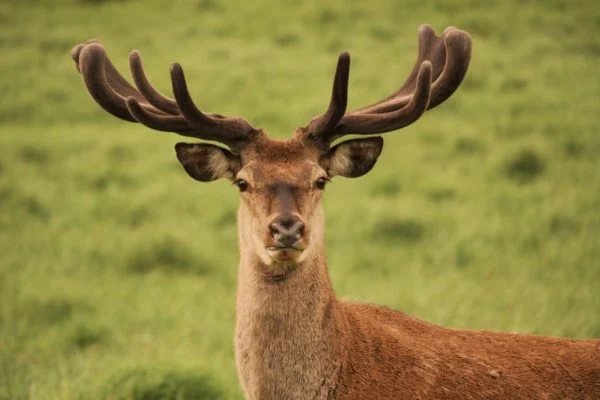
https://a-z-animals.com/animals/deer/
🦌DEER🦌
Deer, (family Cervidae), any of 43 species of hoofed ruminants in the order Artiodactyla, notable for having two large and two small hooves on each foot and also for having antlers in the males of most species and in the females of one species. Deer are native to all continents except Australia and Antarctica, and many species have been widely introduced beyond their original habitats as game animals. One species, the reindeer (also known as the caribou), has been domesticated. Some swamp and island species are endangered, but most continental species are flourishing under protection and good management. Deer, when granted some protection, readily exploit man-made disturbances caused by agriculture, forestry, and urbanization. White-tailed deer, normally a cherished North American game animal, have even become pests in suburbs and cities in the United States and Canada.
The requirement for nutrients and energy has severe repercussions on the ecology of deer. It confines deer to relatively productive habitats, excluding them from deserts, dry grasslands, and geologically old landscapes leached of nutrients. Moreover, it severely limits the abundance of Cervidae in mature, species-rich faunas in which many herbivore species compete for food. In order to meet their high nutrient demands, deer are specialized to exploit disturbed ecosystems. For instance, after a forest fire, an area normally passes through several ecological plant successions within a few decades before the original conditions are restored. Early plant successions normally contain an abundance of the type of plant food required by deer. Some disturbances, such as river flooding and the rise and fall of lake levels, occur annually and create local, perpetually immature, nutrient-rich ecosystems. Since disturbances such as wildfires, storm floods, avalanches, or wind-felled trees are unpredictable, deer have evolved great abilities to quickly find and colonize such transient habitats. For example, the severe ecological upheaval caused by the extreme climatic oscillations of the Ice Ages greatly favoured deer. Glaciers ground rock into highly fertile waterborne silt and wind-borne loess that refertilized landscapes and rejuvenated the soil. Extinctions swept away warm-climate competitors. From the tropics deer spread to colder and more seasonal landscapes, including the Alps and the Arctic. Like other families of large mammals that colonized extreme Ice Age environments, deer diversified and evolved into grotesque giants that had ornate coat patterns and large, bizarre antlers, which could grow only from nutrient-rich soils.
While deer tend to have broad, somewhat similar food habits, they are highly divergent in their antipredator strategies. This divergence segregates species ecologically and thus minimizes potential food competition between species sharing the same space. A deer species that hides and, if discovered, departs in rapid jumps to hide again requires forests and thickets, while a highly specialized runner needs flat, unobstructed terrain to outrun predators. Specialized jumpers may choose to stay close to steep slopes and rugged terrain and thus avoid areas frequented by species that run and jump, while cliff climbers may exploit gradients and altitudes closed to others.
🦌🦌🦌